#St Luke's Chapel
Text
Revealed Religion : Benjamin West. 039 of 100 Bible images
039 The Nativity
The Nativity. 1792. Oil and paper on canvas. Height: 497.8 cms (16.3 ft); width: 256.5 cms (100.9 ins). National Trust, Petworth House, Petworth, West Sussex. For the window for St. George’s Chapel, Windsor which was installed in 1796. From 1779 to 1801 West was engaged in George III’s many alterations to Windsor Castle, and became involved with the large-scale restoration of St…

View On WordPress
#American art#angel#Benjamin West#Bible#Gospel of Luke#Holy Family#nativity#painted glass#Petworth House#Phillip Medhurst#Revealed Religion#St George&039;s Chapel#Windsor
0 notes
Text
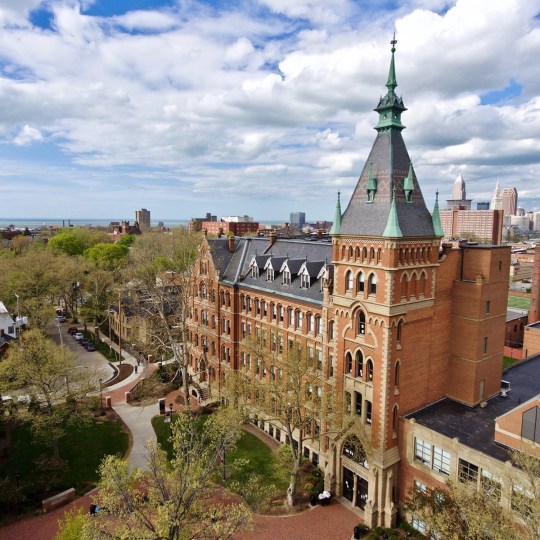
The first time I ever saw someone answer a cell phone in a movie theater was in the middle of a midnight screening of Mel Gibson’s The Passion Of The Christ. A blood-drenched Jim Caviezel was being whipped when I heard “Hello? Yeah, what’s good? I’m in the movie.” My stomach started to bounce as I tried, unsuccessfully, to stifle a laugh. My friend Jeremy elbowed me to either egg me on or stop me, knowing the laughter would catch on with the rest of our group: ten other Saint Ignatius High School students who chose to go on an “Urban Immersion” retreat our senior year.
I saw Mr. Grady’s tear-stained face turn in the darkness. He was sitting a row in front of us, and he appeared to be livid. He let out a sharp “shhh!” then looked over to let us know he’d do far worse if we did anything further to disrupt his viewing experience. Disciplinary actions would be taken if we giggled again. Our trip would be cut short. A teacher threatening to send us all home to our parents that week, however, would have been welcomed.
Most Ignatius students went on “Kairos” retreats (Greek: “God’s Time”) that featured three days of camping and praying, followed by a “witness” portion where students arrived back on campus to share, at the center of St. Mary’s chapel, what they’d learned during their period of reflection. Typically, they said “I love you, Dad!” while fighting back tears before running back to their pews. They also wrote letters about their newfound or newly confirmed love of Jesus Christ. I received one of these letters from my best friend who was a year ahead of me. His words moved and excited me. I anticipated my trip all year.
The students in the movie theater with me that night, however, had all signed up for a retreat in which we spent the week living as if on the streets of inner-city Cleveland. The Urban Immersion retreat was four days of sleeping in a church basement, living off the equivalent of food stamps (about $5 a day for groups of four), and eating the rest of our meals at shelters where we also volunteered our time. There was also a “scared straight” period where we sat in a circle of folding chairs at the 2100 men’s shelter my friend Luke’s dad ran and listened to grown men scream about how “crack does not discriminate!”
Also, we got to see The Passion of The Christ opening night.
Perhaps you read about the record-setting earnings this movie made the week it premiered. The first $125 million was thanks to big groups like ours attending. Also thanks to the guy who had to answer his phone while the Romans killed Christ. I’m not sure how we as mock-poor kids on our immersion trip were supposed to be able to afford the movie ourselves in keeping with the rules, but the timing seemed right, so our teachers took us.
Read the rest here.
22 notes
·
View notes
Text
The Arrival of the Wedding Guests
16 September 2023 - 10:00

Luke SNN: "Good morning, everyone. It's a beautiful sunny morning here in London, and we've got some exciting news to share today."
Isabel SNN: "That's right, Luke. The city is all abuzz with the arrival of wedding guests for the much-anticipated royal wedding. It's been quite the spectacle so far."
Luke SNN: "Absolutely, Isabel. The sun is shining, and the city is adorned with colorful banners and flowers, all in celebration of the union between Princess Marie and Amadeus."

Isabel SNN: "Guests from far and wide have been arriving since dawn, and they are certainly turning heads with their elegant attire and stylish hats."
Luke SNN: "Indeed, Isabel. The whole city is embracing the joyous occasion. We've even heard reports of local vendors selling special wedding-themed treats on the streets.
Isabel SNN: "Now let's go over to Nickie who is there for us at St. George's Chapel. Good Morning Nickie."

Nickie SNN: "Good Morning everyone. It's heartwarming to see the city come together like this."
Isabel SNN: "Speaking of guests, Nickie, have there been any notable arrivals?"
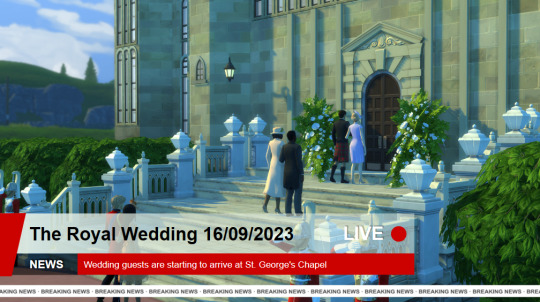
Nickie SNN: "Oh, absolutely, Isabel. We've spotted diplomats, dignitaries, and celebrities from various countries. And let's not forget the well-wishers who have lined the streets, hoping to catch a glimpse of the royals and the guests."
Nickie SNN: "And now, as the clock ticks closer to the ceremony, the esteemed guests are starting to make their way inside the grand venue."

Luke SNN: "Yes, Nickie. The anticipation is building as everyone finds their seats amidst the elegant décor and beautiful floral arrangements."
Isabel SNN: "The venue is truly a sight to behold, a blend of tradition and modernity. The guests are greeted by a stunning display of opulent chandeliers, fresh flowers, and an overall sense of regal charm."

Luke SNN: "And the chatter inside is lively, with guests sharing their excitement and well-wishes for the couple."
Nickie SNN: "Indeed. It's a gathering of influential individuals, diplomats, and close friends, all here to witness the union of two hearts."

Isabel SNN: "And let's not forget the exquisite fashion on display. The guests have gone all out in their sartorial choices, from the vibrant dresses to the impeccably tailored suits."
Luke SNN: "Absolutely. Fashion is certainly a highlight of any royal event, and today is no exception. The elegance and style in this room are simply breathtaking."
Nickie SNN: "It's like a fairy tale come to life, isn't it?"

Isabel SNN: "It certainly is, James. And as we all await the wedding ceremony, the excitement is palpable in the air."
Luke SNN: "Well, we'll be covering every moment of this historic event, so stay tuned for all the updates on the royal wedding of Princess Marie and Amadeus.
Isabel SNN: "Yes, indeed, Lucy. It's a beautiful day, and we're honored to share it with our viewers. Stay with us as we continue to bring you live coverage of this momentous occasion."
#sims 4 royal family#ebodsims#sims 4#sims 4 royal legacy#sims 4 royal story#theroyalfamilyofbrittania#sims 4 royal simblr#ts4 maxis cc#sims4 royal wedding
10 notes
·
View notes
Text

St Luke paints the Virgin and Child from life
Christ Church Cathedral, Dublin Chapel of Laurence O'Toole Window Virgin and Child with Saint Luke by Patrick Pollen
#found#art#dublin#stained glass#modern art#virgin and child#Patrick pollen#religious art#saint luke#stained glass window#church art#cathedral
12 notes
·
View notes
Text
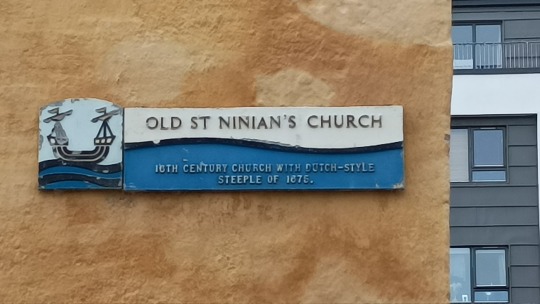






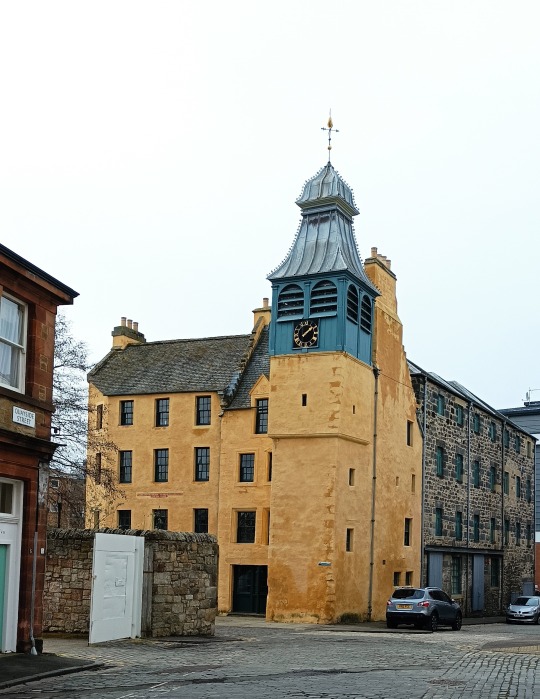


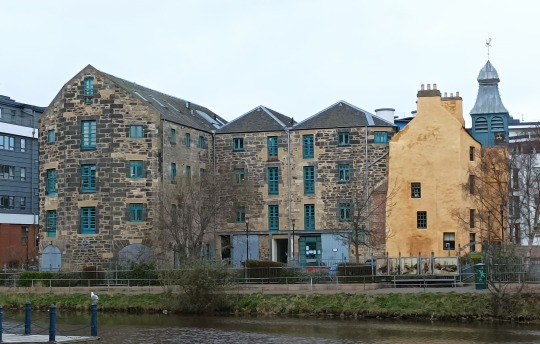
St Ninian’s Manse.
I've not had decent walk around Leith for a while so I remedied that today. My first point of interest is the former church, nestled amongst a cluster of modern buildings at Quayside Street off Sandport Place, while you can see the steeple, which I shal come back to later, easily enough from further afield, you won't find the Manse in full until you are almost on top of it.
The buildings origins lie in a chapel that established in the late 15th century, was the home of North Leith Parish Church, playing a vital role in the development of the area. It's importance is evident as it stands near the head of the first bridge to North Leith over The Water of Leith.
ln 1493 Robert Bellenden, Abbot of Holyrood, founded and endowed a chantry chapel. The chapel fell into ruin after the Reformation, it was restored in 1595, and in 1606 became officially the church of a new and independent parish of North Leith. The Statistical Account of Scotland states both the church and manse are as old as the times of popery, but they have undergone a variety of repairs; including a considerable one in the year 1736, when it was in a great measure rebuilt." In the early 19th century, when a new parish church had been provided on another site, the old one was let to other congregations; and in 1825, when the last of these left, the place was converted into a granary, which in its turn has been rebuilt as a mill, pics of it as a mill in the 1950-60's can be found by clicking here
The most impressive part of The Manse, to me anyway, is the aforementioned spire. If you look at it closely you will see it is made of wood. This is Leith's and so Edinburgh's sole surviving 17th-century timber steeple.
The entrance to the stair, now covered by an extension, is dated 1675 as seen on the lintel above the door. Another interesting feature is the inscription above an archway that says;
BLESED AR THEY YAT HEIR YE VORD OF GOD AND KEIP IT/ LVK XI 1600.
It comes from the New Testament bible by Luke, and quite literally translates to;
“Blessed rather are those who hear the word of God and keep it!”
The charity Scottish Historic Buildings Trust restored the building from 1996 to 2002 along with the adjacent Quayside Mills, creating desirable waterfront accommodation and office space. Much of the interior, from what I can see having trawled through a fair amount of pictures, retains a certain amount of it's charm, with many of the timbers visible throughout the building.
Some debate has gone on, due to the alterations over the centuries, whether this or Lambs House, a short walk away, on the south of the bridge is the oldest building in Leith.
Leith is usually thought of as the port or dock area of Edinburgh. It was not, however, part of Edinburgh until 1920. Between 1833 and 1920 Leith was an independent burgh. Before this Edinburgh town council was able to control Leith through being the feudal superior of the land there. Many of the citizen s to this day are fiercely proud of their old status, calling themselves Leithers, rather than saying they are from Edinburgh, it is apparent on the poem below I found on the Leith Forever web page, it was written in 1919 and appeared in Andrew Grant’s collection of poems from the Leith Observer 1914 -1920.
Ye folks a’ Leith, are ye a’ sleepin’
Whilst Reekie’s cheils are busy reapin’
Braw schemes to hae ye in their keepin’ For
evermair?
Arouse yoursel’s an’ dae the sweepin’
O’ your ain stair!
If ye yoursel’s wad save some siller,
Ye’d better tak’ in hand the tiller
Auld Reekie means to “droon the miller,” An’ sink
the mill;
For loaded debts noo fairly fill her-
They’re ‘yont her skill.
The debter’s grawvit’s rooned her neck,
An’ just tae save hersel’ frae wreck,
She offer ye her hindmaist cheque,
Frae some dark source.
But in nae bank, gi’en bow or beck,
Wad e’er endorse.
Keep clear o’ yon West-eny crew
O’ their “fine airs” hae nocht ado,
A keen East windblaws thro’ and thro’
Their mim-moo’ed graces;
Jist skin it aff, an’ then ye’ view
Some cranks in places!
Tak’ heed from Glesca’s swollen size;
Hoo burghs aince pride did prize
Lie low this day, an’ a’ their sighs
Speak o’ taxation.
This lesson ye maun ne’er despise
O’ ruination!
But rouse ye, toonsmen, ane an’ a’
An’ gie your pipes a warlike blaw.
Let ilka patriot in a raw
Tak’ up his stand;
Auld Reekie’s seekin’ for oor fa’
An’ wants command.
Ye craftsmen o’ oor ancient toun,
Your he’rts I ken are unco soun’,
It’s time ilka ane o’us marched roun’
Oor ain auld border;
An’ paced oor boundaries up an’ doon
In martial order.
The “honest toun” ayont oot by,
(Whaur danger’s likewise drawin’ nigh)
Has lately bade her burghers hie
To “ride the marches”;
Let Leith wi’ her auld neebor vie,
‘Neath hame-mad arches!
Let’ a’ meet at the Giant’s Brae
An’ mak the auld Port bricht an’ gay,
Turn oot in sold, massed array,
Mak’ Reekie quiver;
On each a badge, an’ let it say-
“Auld Leith for ever!”
Restalrig - 30 August 1919,
Next up I will post pics and history of the more well known, Lambs House.
24 notes
·
View notes
Text
SAINT OF THE DAY (September 21)
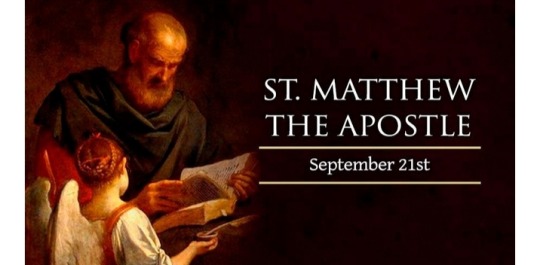
Saint Matthew, the first-century tax collector turned apostle who chronicled the life and ministry of Christ in his Gospel, is celebrated by the Church today, September 21.
Although relatively little is known about the life of St. Matthew, the account he wrote of Christ's ministry — traditionally considered to be the first of the four Gospels — is of inestimable value to the Church, particularly in its verification of Jesus as the Messiah.
Eastern Catholics and the Orthodox churches celebrate St. Matthew on November 16, along with St. Fulvianus, a prince who is recorded in some traditions as converting from paganism after Matthew's martyrdom.
The Gospel accounts of Mark and Luke, like Matthew's own, describe the encounter between Jesus and Matthew under the surprising circumstances of Matthew's tax-collecting duties.
Jewish publicans, who collected taxes on behalf of the Roman rulers of first-century Judea, were objects of scorn and even hatred among their own communities, since they worked on behalf of the occupying power and often earned their living by collecting more than the state's due.
Jesus most likely first encountered Matthew near the house of Peter, in Capernaum near the Sea of Galilee.
The meeting of the two was dramatic, as Matthew's third-person account in his Gospel captured:
“As Jesus passed on,” the ninth chapter recounts, “he saw a man named Matthew sitting at the customs post. He said to him, 'Follow me'. And he got up and followed him.”
Matthew's calling into Jesus' inner circle was a dramatic gesture of the Messiah's universal message and mission, causing some religious authorities of the Jewish community to wonder:
“Why does your teacher eat with tax collectors and sinners?”
Jesus' significant response indicated a central purpose of his ministry: “I did not come to call the righteous but sinners."
A witness to Christ's resurrection after death, as well as his ascension into heaven and the events of Pentecost, Matthew also recorded Jesus' instruction for the apostles to “go, therefore, and make disciples of all nations, baptizing them in the name of the Father, and of the Son, and of the holy Spirit, teaching them to observe all that I have commanded you.”
Like 11 of the 12 apostles, St. Matthew is traditionally thought to have died as a martyr while preaching the Gospel.
The Roman Martyrology describes his death as occurring in a territory near present-day Egypt.
Both the saint himself and his Gospel narrative have inspired important works of religious art, ranging from the ornate illuminated pages of the Book of Kells in the ninth century, to the Saint Matthew Passion of J.S. Bach.
Three famous paintings of Caravaggio, depicting St. Matthew's calling, inspiration and martyrdom, hang within the Contarelli Chapel in Rome's Church of St. Louis of the French.
Reflecting on St. Matthew's calling, from the pursuit of dishonest financial gain to the heights of holiness and divine inspiration, Pope Benedict said in 2006:
“In the figure of Matthew, the Gospels present to us a true and proper paradox: those who seem to be the farthest from holiness can even become a model of the acceptance of God's mercy and offer a glimpse of its marvelous effects in their own lives.”
6 notes
·
View notes
Text
An anarchy in architectural analysis
My second collection of university writings is a three-part 'portfolio' of certain Oxford University buildings and their architectural features, functions and contexts. Each part of the portfolio is a short response to a different prompt, supported by photos and illustrations by your dear artist herself.
The chapel at New College and the converted-church library of St Peter-in-the-East are drastically different spaces, from different points in history.
The east window of St Peter-in-the-East is in the Perpendicular Gothic style, typical of medieval church windows, and the image itself is a typically intricate late-medieval design. It features the four evangelists (Matthew, Luke, Mark and John) with their respective attributes of the winged beasts of Revelation (man, calf, lion and eagle) in a vibrant colour palette of red, blue, green, purple and gold.
The Great West Window of New College chapel, on the other hand, has a very similar style of tracery, possibly 15thcentury, but a different glass design. The design was created by Sir Joshua Reynolds in the 18th century – an elaborately painted set of allegorical figures representing the Seven Cardinal Virtues. These seven striking women are portrayed in such pale colours with accents of gold and orange that, when compared to the east window of St Peter-in-the-East, contrasts radically against the older, fully saturated, typical medieval style. However, if we look around the New College antechapel, we will see that the colour palette for this newer Georgian glass is designed particularly to fit in this room, alongside the grisaille and red glass on the south side and the muted colours on the north. These medieval windows depict the multitudes of saints that we would expect from pre-Reformation Catholicism.
What is interesting, but not particularly obvious, is the difference in leading in the Great West Window compared to the typical medieval stained glass found in the rest of the antechapel as well as on the east window of St Peter-in-the-East. As illustrated in Figure 1, the leading in St Peter-in-the-East’s east window is prolific and detailed, separating and supporting many colours of glass, as well as painted glass pieces. It adds a contoured effect to the design, but by breaking up the image, also blocks some, albeit not much, light. In the Great West Window, however, as seen in Figure 2, the leading is significantly reduced. This will, inevitably, reduce the strength of the window as a whole, but allows the window to let in the maximum light possible, and highlights the intricately painted details. Only the three centre figures (Faith, Love and Hope, significantly, the three traditional theological virtues) merit any outline, but even this is minimal and serves only to accentuate the forms slightly.
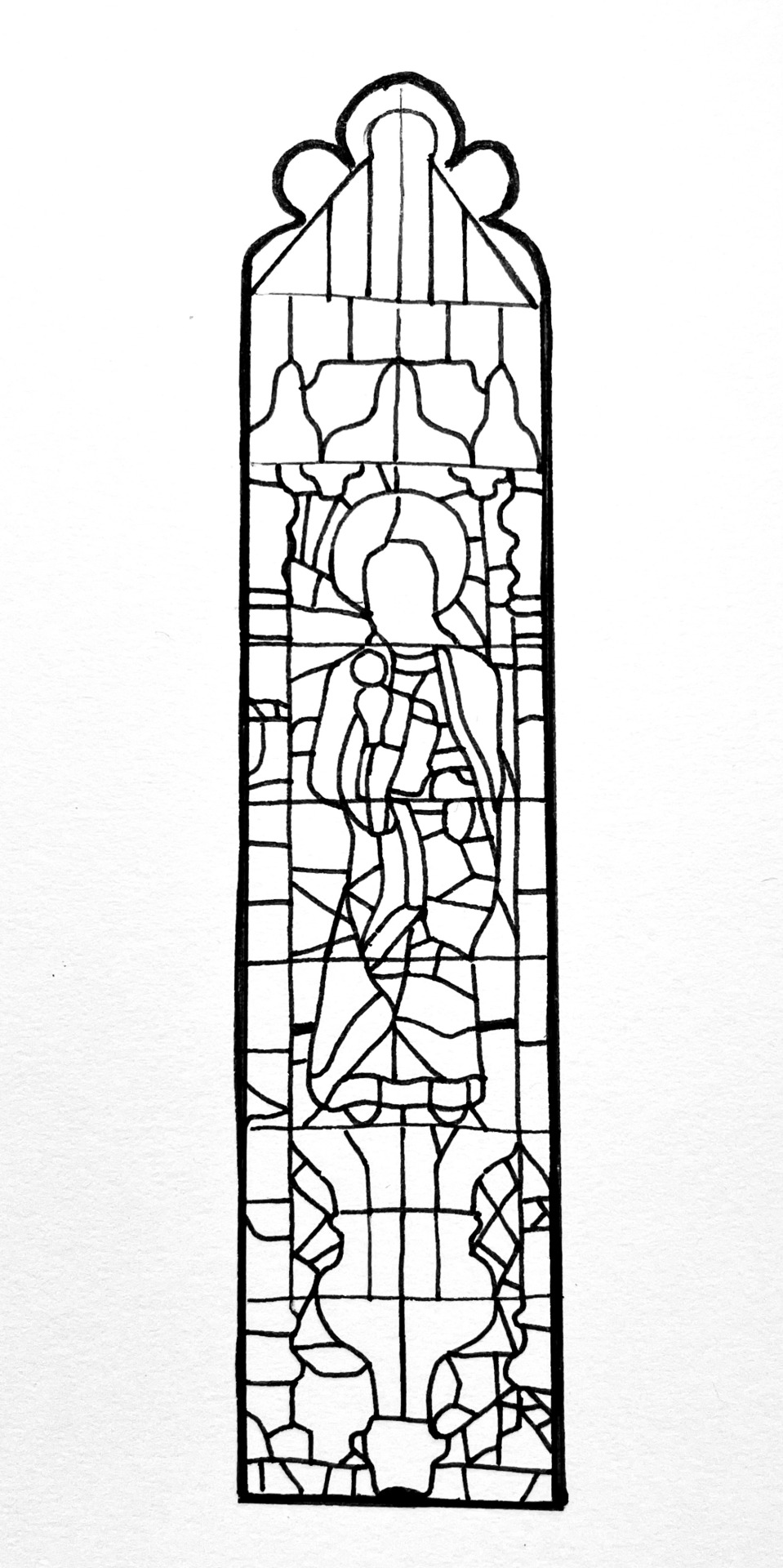



Figure 1 Illustration of leading on one light, featuring St Luke, east window, St Peter-in-the-East
Figure 2 Illustration of leading on lower lights, featuring the Seven Cardinal Virtues, west window, New College chapel
While the east end of St Peter-in-the-East is not unusual, with its detailed stained glass window, the east end of New College chapel abuts the tower and thus cannot have a window as is the custom. Instead, it features one of the grandest reredos in Oxford (Fig. 3). Housing multitudes of saints and prophets, these statues were restored in the Gothic Revival, after the Oxford Movement brought interest back to icons in the 19th century. They had been covered in plaster, presumably at the time of the Puritan movement when prayers to the saints and graven images were shunned.
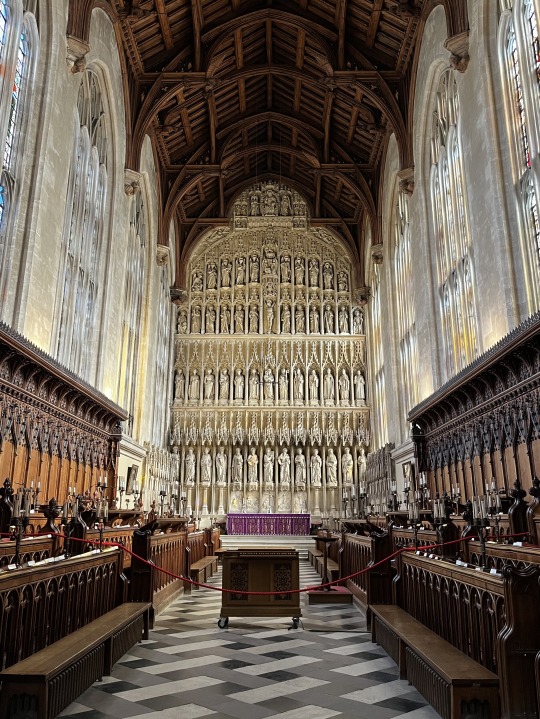
Figure 3 New College chapel reredos
———————————————————————
Christ Church boasts the largest quadrangle of all Oxford colleges, affectionately dubbed the ‘Tom Quad’, previously the ‘Great Quad’. The first thing that strikes you as you step into the quad from the south-east corner is the great late-Gothic styled Tom Tower, overlooking the space with a fair amount of character. It stands unique among the towers of Oxford – an ogee ‘onion’ dome, surrounded by finials, sitting atop a sturdy, eight-sided lantern. The grand west gate, situated under a large Perpendicular window, swallows up whoever stands beneath its four-centred arch (Fig. 1). The whole quad is lined with crenelation above, providing a fortified effect.
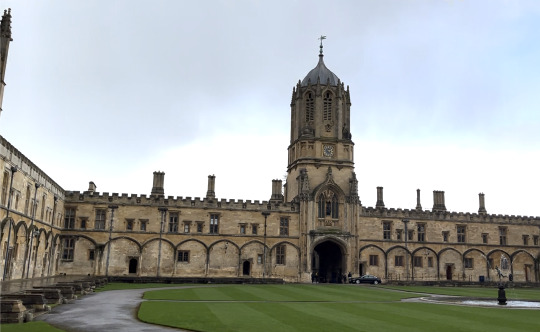
Figure 1 Tom Tower, overlooking Tom Quad, Mercury fountain in the foreground
The apparent blind arcade that encircles the whole quad is an unfortunate relic of the unexecuted Tudor-arched cloister that had been planned to shelter fellows on their way and enhance the grandeur and spectacle of the whole college. The flat-topped windows that peek through that arcade on the ground floor, perhaps because of that unfinished plan, are unevenly set, which provides a curious effect when noticed. They are simple and unadorned, serving only for light to the accommodation for fellows and company.
The dining hall sits to the south of the quad, its grand Tudor windows and high ceiling supported by narrow buttresses, and the string course bejewelled with grotesques and floral stonework. The elegant, decorative finials atop the buttresses are crocketed and panelled and serve only an visual and aesthetic purpose – to elongate the form of the hall and provide further illusion of height. The Great Staircase in the south-east (Fig. 4) has a beautiful elaborate fan-vaulted ceiling (Fig. 2) with swirling circular patterns that draw you up, inevitably adding to the grandeur of the quad, even if not visible from the outside.
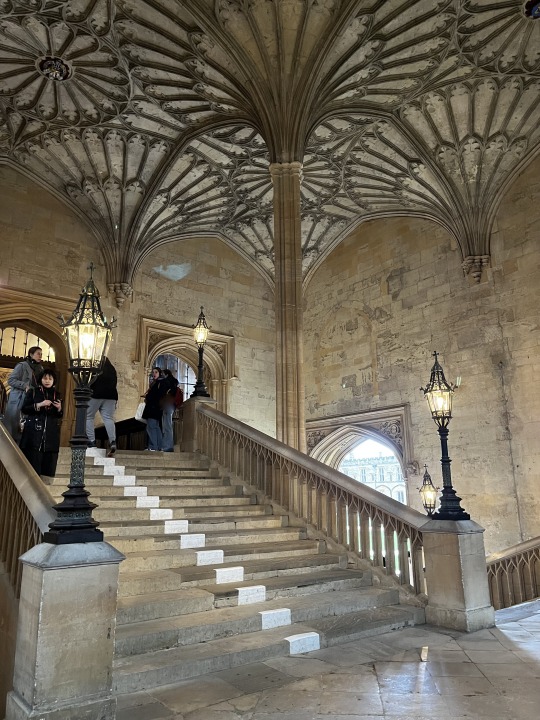
Figure 2 The Great Staircase
Three statues sit in elaborate niches above the entrance to the dining hall, two angels bearing heraldic symbols either side of Cardinal Wolsey, the founder of Cardinal college, the predecessor to Christ Church. (Fig. 3)

Figure 3 Statue of Cardinal Wolsey in Tom Quad
The Mercury fountain in the centre of the quad elevates the space as a water feature and seats a statue of its titular fleet-footed messenger god of Roman mythology, a figure representing communication, commerce and luck for the inhabitants of the college. (Fig. 1)
The two truncated bastions on the north and south-west corners of the quad (Fig. 4) and the bottom half of Tom Tower are more remains of the previous plans of Wolsey before his grand vision came to a halt. While Sir Christopher Wren finished the west entrance tower, the corners were never completed to the standard of Oxford towers that had been imagined.
The deanery sits elevated above the north-east corner, featuring the statue of John Fell, Dean from 1660 – appropriately, the students walking the corridor beneath the deanery would be watched closely by the Dean himself.

Figure 4 Plan of Christ Church, RCHM Inventory of the Historical Monuments of Oxford
———————————————————————
R. C. Whiting says in his introduction that ‘the rural aesthetic was firmly grasped by those interested in Oxford’s preservation’, highlighting the obvious prominent presence of swaths of green space within the city, that have successfully remained after so many centuries. He specifically mentions the ‘rural motifs’ of the Magdalen rose garden and Christ Church meadow, as well as the recurrent use of Cotswold stone around the city. An example of one of these such structures is the dubiously designed Nuffield College that was looked at on our Oxford walk. These college buildings are inspired by the idea of the Cotswold cottage, featuring flat façades and large chimney stacks on highly slanted roofs. These roofs mean expansive attic spaces that are made full use of with their dormer windows with lead glazing, all distinctive of that Cotswold architectural pattern. See the attached images comparing the interior façade of Nuffield’s Lower Quad with a typical Cotswold cottage in Coln St. Adwyns. Nuffield essentially scales up this cottage design to fit in with their Oxford college context, perhaps attempting to transfer the domestic feeling of village life to their college accommodation. They use the same sorts of natural materials, like Cotswold stone, and through that, provide an appearance of traditional craftsmanship that was repopularised during the Arts and Crafts movement. All these aspects of the design of Nuffield College indicate Whiting’s idea that new architects as well as those seeking to preserve Oxford focus on the promotion of natural and rural motifs.
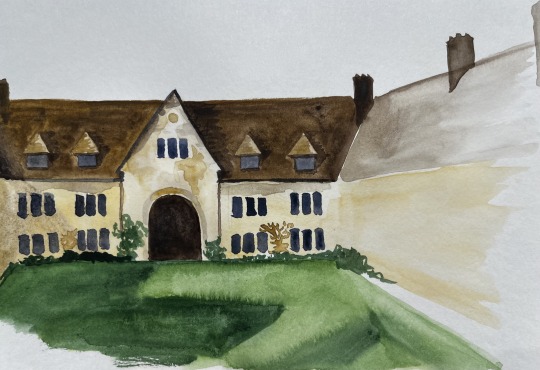
Figure 1 Nuffield College Lower Quad
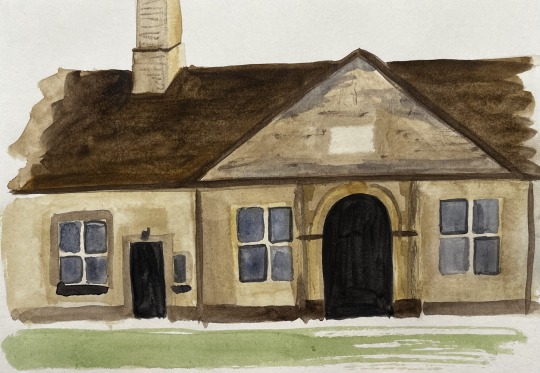
Figure 2 Typical Cotswold cottage
Many of Oxford’s Saxon and medieval buildings have repeated natural motifs distinctly or subtly included in their external designs, in the forms of capitals, ‘head stops’, and grotesques, among others. Carfax tower is an example of such, these floral images lining the string course below the entablature – some being hints of stone foliage, while the Green Man looks protectively down over the town square (Fig. 3). While the tower used to be part of the church of St Martin, the Green Man is a fascinating cultural remnant of Celtic paganism that has been carried down through the centuries, preserved in religious and secular architecture. Its symbolism seems appropriate for Oxford, being rebirth and new growth, as the past is preserved and rediscovered time and again.
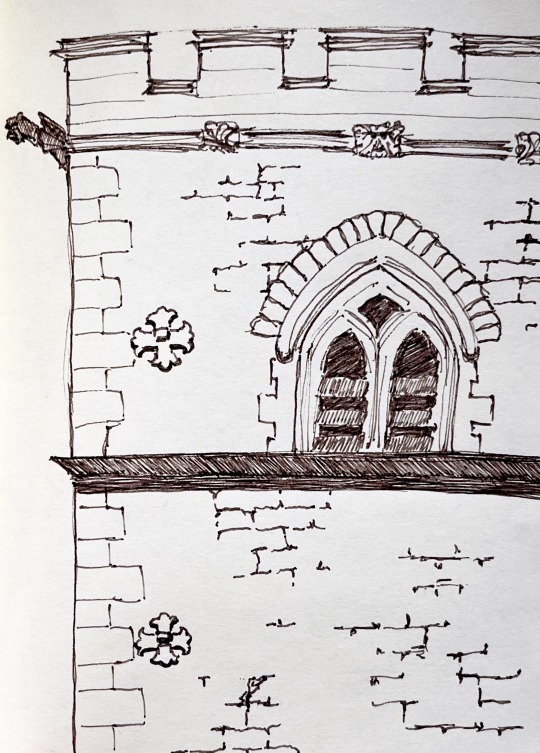
Figure 3 Carfax tower
Green spaces are extremely prevalent in the layout of Oxford, particular around and among the colleges, as they all have quadrangles, some of which are maintained with lawns, and many colleges also have well-established gardens. The Fellow’s Garden, hidden behind Christ Church Cathedral is one such space, elegantly maintained and preserved, in part, through its exclusivity. It assists to bring a sense of the country garden into the bustling centre of this very busy city.
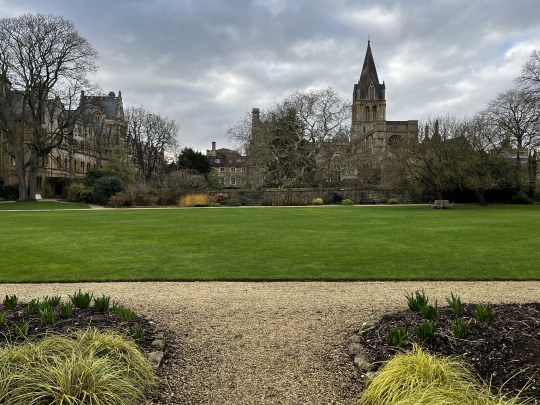
Figure 4 Fellow's Garden
2 notes
·
View notes
Text
San Giovanni in Laterano
Today we visited The Basilica of St John Lateran. It is the oldest church in the western world, founded in 342. Its present appearance dates to the 17th century and later. It is considered the most important basilica in Rome, ahead of St Peter’s. The basilica and adjacent palace were home to the pope until the Middle Ages.
The basilica is enormous and beautiful. Today, it was packed with people, all seated on folding chairs and all holding notebooks. Paul approached an usher who explained it was some sort of liturgical retreat for couples. It had started at 9am but was now over (it was noon) but everyone inexplicably continued to sit there. Curious. Or maybe we completely misunderstood his explanation!! He and Paul joked about their own long marriages…it was funnier in Italian!

The outside, while enormous, is nothing special.

Inside, it is beautiful and even more enormous. We will go back when it is not full of people to get a better look.
Next door is the Sancta Sanctorum, which was the original private chapel of the papacy. Over the altar is the Uronica, a painting of the face of Jesus, begun by St Luke but finished by the hand of an angel.
And to reach this chapel, are the Scala Santa, or Sacred Stairs. They are purported to be the stairs that Jesus climbed to meet his judgement by Pilot. They were moved to Rome from Jerusalem. They are covered in wood to save their holiness. Pilgrims climb them on their knees.
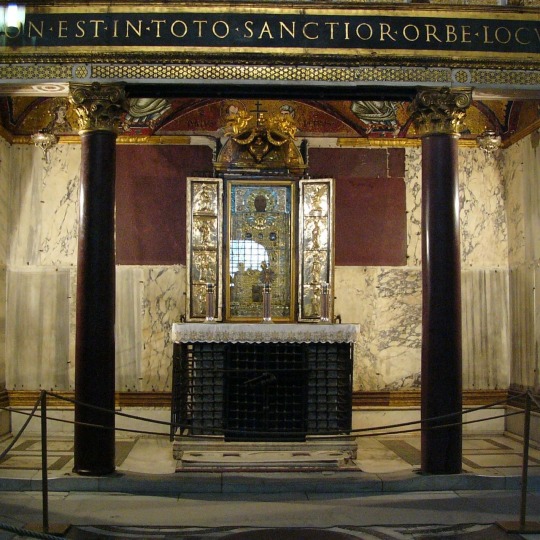
The Sancta Sanctorum altar with the Ursula enshrined over it.
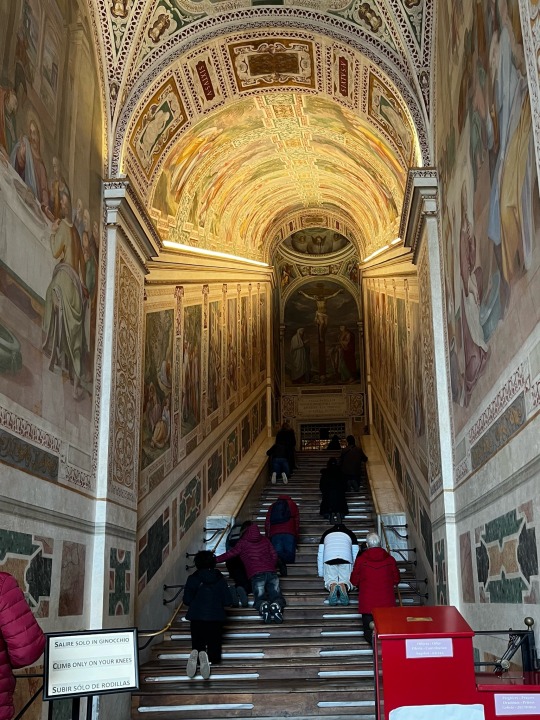
People are climbing the steps on their knees. The stone steps are visible between the wooden protective pieces.

We heathens could walk up a different staircase…

…whose walls held graffiti from the 1600s.
2 notes
·
View notes
Text
HOMILY for the Feast of the Visitation
Zeph 3:14-18; Isa 12:2-6; Luke 1:39-56

This year the feast of the Visitation falls within the Pentecost novena, that is to say, these nine days between the Lord’s Ascension and Pentecost Sunday, when the Lord had told his disciples to pray and prepare for the coming of the Holy Spirit. With this in mind, I thought it would be fitting to consider in brief the effect of the Holy Spirit’s activity in the event of the Visitation.
If you go over to our chapel of the Visitation, you’ll see the Holy Spirit, in the form of a dove, hovering actively over the depictions of Our Lady and St Elizabeth. For the Holy Spirit is, in fact, at the core of today’s Gospel: he is the divine cause of the prophetic words being uttered, and indeed the source of the invisible grace that is at work in Our Lady, St Elizabeth, and the infant St John the Baptist while in the womb of his mother. St Luke’s Gospel puts it like this: “As soon as Elizabeth heard Mary’s greeting, the child leapt in her womb and Elizabeth was filled with the Holy Spirit.” (Lk 1:41)
Why did the child leap in the womb? The Tradition of the Church is that the unborn St John the Baptist was, at that moment, sanctified by the grace of the Holy Spirit and so he already begins to act as the herald of the Lord, which is his divine vocation. So St Ambrose, for example, says: “Elisabeth first heard the word, but John first experienced the grace. She heard by the order of nature, he leaped by reason of the mystery. She perceived the coming of Mary, he the coming of the Lord.”
From this, we remember that the Holy Spirit is the sanctifier, and also the one who thus empowers us for our Christian vocation. For as St Paul says, God “saved us and called us with a holy calling, not in virtue of our works but in virtue of his own purpose and the grace which he gave us in Christ Jesus”. (2 Tim 1:9) The Holy Spirit, therefore, makes us holy and so enables us to fulfill our Baptismal calling as Christians. Thus, as we say in the Creed, the Holy Spirit is the “giver of life”, for to become holy is to be filled with divine life; to be holy is to live our Baptismal life to the full.
St John the Baptist, having been saved by the grace of God at this moment, therefore leaps with joy. The first reading from Zephaniah expresses the exultation of Israel when God comes to save his people. This happens today when the Saviour, carried in the womb of the Blessed Mother, comes to John the Baptist, the greatest of Israel’s prophets. Thus, salvation has come to Israel; the prophecy is fulfilled, and so the Herald, redeemed and sanctified in the womb of Elizabeth, leaps for joy. Mary, too, cries out with joy when she beholds the promises of God being fulfilled, and so she cries out: “my spirit rejoices in God my Saviour”. (Lk 1:47) For joy is one of the fruits of the Holy Spirit, and it is born of the deep recognition that God’s promises are being fulfilled; that God is with us to save and free us; that God is renewing the world by his grace. In those moments when the kingdom of God seems far away, when we might be overwhelmed by sin and confusion and despair, we our hope is imperilled by the hardship and desperation of this life, we need to call on the Holy Spirit. For as St Basil says: “the first fruit of the Spirit is peace and joy.”
As the Creed says that the Holy Spirit has “spoken through the prophets” so we can note in today’s Gospel that the Spirit inspires words of prophecy. This is not so much about foretelling the future, but about having the wisdom and insight to declare what God is doing here and now; it is having the foresight to see deeply into the present, and so to discern the activity of God’s Holy Spirit, God’s grace, at this time in human history. For god is always at work in our lives and in every age, but we just do not always have eyes to see it. Hence, St Elizabeth recognises the person of Jesus, the Saviour, in the womb of her cousin Mary. And Our Lady declares the salvation that has come – the great things that God is doing and which will overturn the sinful ways of our world – because of the Baby that is growing within her womb. Our Lady’s words, her Magnificat, have inspired and brought hope to generations of Christians, as they promise a world renewed and restored to justice and charity by the Just One, Jesus Christ.
Finally, this feast day and this mystery of the Visitation always brings to mind, for me, an essential truth, and one that our world today would ignore or even actively deny. We are reminded of the sanctity of the unborn child, of the great wonders that God works in the wombs of Mary and Elizabeth, and of the immeasurable value of mothers, both young and old, who graciously and lovingly accept the gift of life and who, in collaboration with God’s grace, take on the beautiful responsibility of motherhood. For this, they need faith, fortitude, hope, and above all charity - all gifts and virtues of the Holy Spirit. Today’s feast, therefore, is a wonderful herald for the great feast of Pentecost, and during these days of preparation, let us ask the Holy Spirit to come and visit us. May he fill us with the fire of God’s love just as he did for Elizabeth and Mary and John at Ein Kerem, in the hill country of Judah, all those years ago.
14 notes
·
View notes
Text
"For you were called for freedom, brothers and sisters."

Obi-wan was, in my opinion, an absolute hit. As expected the series maintained the monastic spirituality that influenced me all those years ago. I posted on this earlier before this series began. Elyse Durham writes an excellent article about this series and the monastic spirituality in the above article. She identifies this spirituality and the social principles that guide our faith and are lived out within these monastic communities.
Kenobi reminds me of the many monastics I’ve known. Catholic and Orthodox, in the United States and around the world, these monks and nuns manifest the love of Christ with their very being. Like Kenobi, they care for the poor and vulnerable, often at great risk to themselves. Through letters and emails, over the phone and the cloister grille, they offer counseling and consolation to those feeling lost. They work for racial and environmental justice; they strive for the respectful treatment of children, immigrants, and the elderly. On bustling city streets, from little chapels in cloistered convents, they pray for the peace of the world.
There is one other theological emphasis that I wish to comment on in this post. Before I do so please note: Spoiler Alert. As the series was coming to an end most of us were looking for the story of Obi-wan and his confrontation with Vader. Yet there was another story happening that had great theologically significant, the story of the redemption of the Jedi-turned-inquisitor Reva. In her moment of despair Reva attempted to kill young Luke out of vengeance for all the younglings that Vader killed. She stops herself from carrying out the awful act which she realized was wrong. At that moment she is wrought with guilt for attempting to carry out this action. In that context she asks, "have I become him?" (referring to Vader). Obi-wan offers her this pastoral response: "no, you have chosen not to. Who you become now, that is up to you." At this moment she looks up with hope and gets rid of her red lightsaber, Obi-wan then helps her up and says, "Now you are free, we both are."

This past Sunday's second lectionary reading was a famous tract from St. Paul the Apostle's letter to the Galatians 5: 13-15 where he describes Christian freedom.
For you were called for freedom, brothers and sisters.
But do not use this freedom
as an opportunity for the flesh;
rather, serve one another through love.
For the whole law is fulfilled in one statement,
namely, You shall love your neighbor as yourself.
But if you go on biting and devouring one another,
beware that you are not consumed by one another.
Throughout the series we see the juxtaposition of the values of the remaining Jedi that face persecution from Vader and the inquisitors to the story of Obi-wan and the few remaining Jedi and their supporters. As Durham highlights in her article, the values of charity, community, openness and justice are visibly seen with those who support the Jedi and who call themselves "The Path" (like the early Christians who identified themselves as "The Way"). On the other hand, Vader and his inquisitors are seen embracing the dark side, an ethic of competition, division, control and fear.
Reva and Obi-wan are free because they did not succumb to vengeance and despair, they both persevered and demonstrating compassion and mercy. For that reason, Obi-wan can declare that they are free, the same form of freedom that St. Paul the Apostle offers the Galatian community. Their ability to love and serve others redeems them from the corruptive influence of Vader and the Empire.
This scene is followed up by a scene where Vader informs the Emperor on how he is following up in capturing Obi-wan after his apparent defeat. The Emperor goads Vader by suggesting that his own sense of compassion is a weakness, Vader assures him that he serves only his master. The Emperor is Vader's idol and by nurturing his own hate and anger he keeps himself enslaved to his idol.
Christian freedom is not the same freedom we tend to proclaim here in the United States. It is not a free license to do as we wish. It is not the freedom to do what I want with my pregnancy or the freedom to carry as many guns as I want. Christian freedom is the freedom from sin, the freedom to serve one another because we are free from our own self-interest or the self-interest of an idol that controls us. This is the freedom that Obi-wan proclaims to Reva, the freedom to now become who she wants to be and not to serve the Empire and her own vengeful desire (which the Empire exploited). By letting go of the red lightsaber she let go of the pain and guilt she had in witnessing the death of the Jedi younglings, no longer did she feel responsible for this pain. In a similar way, by confronting Vader, Obi-wan was able to let go of the guilt he carried: the guilt of losing Anakin to the dark side. So at that moment, they were both able to experience this Christian freedom which St. Paul the Apostle proclaims above. At that moment, they both found redemption.

1 note
·
View note
Text
Revealed Religion : Benjamin West. 038 of 100 Bible images
038 The angels announcing the birth of Jesus
The angels announcing the birth of Jesus. 1790. Painting; pen, brush and brown ink with oil on paper. Height: 34.61 cm (13.63 in.), Width: 23.5 cm (9.25 in.) A cartoon for a painted-glass window St. George’s Chapel, Windsor which was installed in 1796. From 1779 to 1801 West was engaged in George III’s many alterations to Windsor Castle, and…

View On WordPress
#American art#angel#annunciation to shepherds#Benjamin West#Bible#Christmas#gloria in excelsis#Gospel of Luke#Phillip Medhurst#Revealed Religion#St George&039;s Chapel#Windsor
0 notes
Text
Group of Exemplary Students Honored by East Pasco Chamber Foundation

The East Pasco Chamber Foundation in partnership with the Greater ZephyrhillsChamber of Commerce recognized 10 students from local Zephyrhills schools.
Group of Exemplary Students Honored by East Pasco Chamber Foundation
The students were honored as the Greater Zephyrhills Student Citizen of the Month for February. The ceremony took place at Chick-fil-A in Zephyrhills on the morning of February 21 st This month’s special guest was Melonie Monson, Mayor of the City of Zephyrhills.
Students are chosen by the teachers and administration of their individual schools for exemplaryeffort, achievement and contribution to their school, family, and community.
The students receiving honors were:
- Luke Gagnon (11th grade, Academy of Spectrum Diversity)
- Parker Lucciano (3rd Grade, Children’s Educational Services Elementary Campus )
- Yuridia Vega (7th grade, Children’s Educational Services Secondary Campus)
- Faith Gut (5th grade, Chester W. Taylor Elementary School)
- Morgan Hahn (5th grade, Heritage Academy)
- Jacoby Ellis (6th grade, Raymond B. Stewart Middle School)
- Aliya Farrell (4th grade, West Zephyrhills Elementary School)
- Aurora Robinson (Kindergarten, Woodland Elementary)
- Anthony Moon (6th grade, Zephyrhills Christian Academy)
- Lizandro Alzugaray (11th grade, Zephyrhills High School)
Sponsors and supporters of this year’s program are as follows:
- AdventHealth Zephyrhills
- The City of Zephyrhills
- Chick-fil-A of Zephyrhills
- IR Staffing
- San Antonio Citizens Federal Credit Union
Spotlight sponsor of month Suncoast Credit Union.
The event is supported by:
- U.S. Congresswoman, Laurel Lee
- Senator Danny Burgess, District 23
- Florida House of Representatives Randy Maggard, District 38
- Pasco County Clerk of Court, Nikki Alvarez
- Zephyrhills Mayor, Melonie Monson
- Pasco County
- Sheriff, Chris Nocco
- Bahr’s Propane Gas & AC; BGE, Inc
- Culver’s
- East Pasco YMCA
- Faithful Friends Pet
- Cremation; Jarrett Ford of Dade City
- Kona Ice; Pasco-Hernando State College
- Pin Chasers Zephyrhills
- Pioneer Florida Museum & Village
- Sonny’s Bar-B-Q
- SouthState Bank
- The Zephyrhills/Wesley Chapel
- Ministerial Association
- Trax Credit Union
- VITIS Realty.
If you are an area business and would like to support this impactful program, please contact VickiWiggins at the Zephyrhills Chamber of Commerce at 813-782-1913.
The Greater Zephyrhills Chamber of Commerce advances economic growth and prosperity for thecommunity. The Chamber of Commerce is incorporated in the State of Florida as a 501(c)6 nonprofitorganization. Membership is comprised of businesses, government agencies, public-private corporations,nonprofit organizations, and individuals with a shared interest in preserving and enhancing the quality oflife in Zephyrhills.
The Chamber seeks to promote a vibrant and active business climate supporting economic growth through leadership and active involvement by the membership.
The East Pasco Chamber Foundation is incorporated in the State of Florida as a 501(c)3 nonprofit organization. The East Pasco Chamber Foundation is dedicated to advancing the quality of life in EastPasco through education, leadership, economic development, and community enhancement.
Read the full article
0 notes
Text
Senior Memebers of the Royal Family arrive at St. George's Chapel
16 September 2023 - 11:45
Luke SNN: "Good morning, to those who are joining us now! The royal wedding is in full swing, and we've just seen the arrival of some senior members of the royal family at St. George's Chapel."
Isabel SNN: "That's right, Luke. It's always a moment of grandeur and elegance when these esteemed members of the monarchy make their entrance."
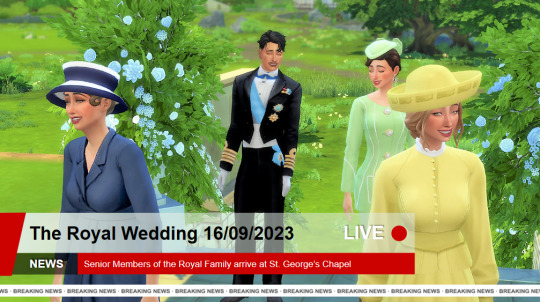
Luke SNN: "There she is, Queen Consort Lottie, gracing us with her presence. Her poise and grace are truly captivating."
Isabel SNN: "Absolutely, Luke. And right behind her, we see the Queen Mother, the matriarch of the royal family, an embodiment of wisdom and tradition."
Luke SNN: "And not to be overlooked, we have Princess Bella and her husband, the Duke of Camden, arriving together. Princess Bella looks radiant as always."

Isabel SNN: "Princess Bella's fashion choices never fail to impress. And the Duke of Camden, a stalwart figure, represents strength and stability."
Luke SNN: "And as they take their seats in the chapel, we know that the royal wedding is well underway. The senior members of the royal family have added their royal touch to this magnificent day."
Isabel SNN: "Indeed, Luke. And we'll continue to bring our viewers all the live updates from this historic event. Stay tuned!"
#sims 4 royal family#ebodsims#sims 4#sims 4 royal legacy#sims 4 royal story#theroyalfamilyofbrittania#sims 4 royal simblr#ts4 maxis cc
9 notes
·
View notes
Text
Friday of the 28th Week in Ordinary Time | 20 October 2023
When I was in my kindergarten, our teacher has a simple yet effective way of keeping the class quiet and participative. She did it through a stamp of stars on our hands.
For every correct answer during recitation, one star.
If we have been behave or quiet for whole duration of our class, one star.
And before we go home, I and classmates will gather at the gate of our school and count who has the most stars. The one who got the least, or worst, the one who got none, will be teased and hardly mocked.
And I believe this is the case of our first reading. St. Paul is telling the Romans that it is rather easy to believe that their ancestor Abraham was justified by God because of ALL THAT HE DID FOR THE ISRAELITES.
He left his country to lead his people to a new land and he so loved the Lord that Abraham was more than willing to offer his son, Isaac, as a sacrifice to God.
If the basis of salvation is WORK alone - then we can say, Abraham was indeed saved. If Abraham should get a star for every good deed he has done for God, baka kulang pa ang dalawang braso niya sa dami ng stars niya!
But St. Paul was making a case. He said, "But when one DOES NOT WORK, yet believes in the one who justifies the ungodly, HIS FAITH IS CREDITED AS RIGHTEOUSNESS."
• When one falls short of our expectation for ourselves;
• When one cannot be like Abraham who can perform magnanimous feats for the Lord and his people;
• When one needs to lie just to make others like or admire us
• St. Paul is saying that the Lord, on the other hand, will not fall short of his love and concern for us.
"Hindi mo na kailangang magpakitang gilas kay Hesus para mahalin ka. Siya na ang nagpakitang gilas para sabihin sa iyong mahal ka niya!"
That is why we can hear Jesus saying in our Gospel today, "Even the hairs of your head have all been counted." 'Pag ang isang tao alam pati dami ng buhok sa ulo mo, sabihin ko po sa inyo, baliw na yang taong iyan, baliw na baliw sa pagmamahal sa iyo.
Jesus simply assures us that we have no reason to be afraid - "You are worth more than many sparrows." It is as if he is trying to tell us, we are more than our mistakes.
We are enough because of what He did for us and not because of what we are doing for Him.
My dear brothers and sisters, as we go out of this Chapel later and return to the reality of our lives, may I challenge you:
"Please be YOU!" No more hiding, no more lies - just be you with all your flaws and imperfections and with all you beauty and kindness.
Just be you and believe that, inasmuch that will be not be enough in the eyes of other people, remember that you are worth more than many sparrows, you are worth dying for.
Amen.
Year I Readings:
Romans 4: 1-8
Luke 12: 1-7
0 notes
Text
Is it Monday??? 🤣
Let’s hope I do a better job tonight…. First, I have to finish telling you about what we did yesterday. I forgot so many things.
Mostly, we were on the bus early and we had a 5 hour tour of Oslo. I have mentioned about the young guide who got the sack because he was “high”. There was a huge U.S. country and western concert (someone called Luke Combs… don’t know him) and I think he had been at that concert. Anyway, I hope he hasn’t lost his job and feels better today!
The sculpture park was truly beautiful. All his sculptures depict family people - or singles that become attached etc - and their journey through life. I have a feeling I didn’t finish telling you how he saved his work from being stolen by the Nazis. I’ll check.
when I say that the city fathers (and mothers???) and governments here appear to have long term vision, we saw that on our next stop when we visited the new Opera House. Built in the old industrial area of Oslo, people said they were MAD … nobody would go there. But whoever said “Build it and they will come” was right. Resembling a large iceberg, it was soon joined by other architecturally innovative buildings and open spaces for people to come and walk and eat (and have saunas!). One of the novelties is you can walk on the roof (a bit like the stretch of grass we can walk up above the Orange Library and Museum!!) and watch the sunset and relax.
on our way to the Museum to see the Viking exhibition, we drove all round the city, passed the Palace and other significant buildings. You could spend 2 weeks in Oslo and not see as much as you would want. It would be so good to come back (not likely ….. but one of the one or two people who might read this might!) and explore the city more closely. I LOVE the architecture and Hugh Haynes would have fallen in love with it too. Anyway, we visited the Viking Museum, e hi biting lots of things (jewelry, head pieces, coins, swords etc) that have been found with buried longships. High ranking soldiers who died in battle were often buried with their ships and chattels in buried mounds. , often the same shape as their long boat. Being buried with their sword was important because Nirvana for the. Was to keep fighting. I think their brutality started to die down with the influence of Christianity.
Oh yes!!! Adjacent to the Holmenkollen ski jump is the Holmenkollen wooden chapel. (I might have a photo - not sure). Inaugurated in 1913 it was set in fire I. 1992 and re-inaugurated in 1996. Apparently it is the most popular place in Norway to get married but you have to book ahead 4 or 5 years!!
I asked our terrific replacement guide if she knew of a good place to go for dinner last night and. ….. have I already told you?? I can’t see yesterday’s piece until I post this one? Well anyway, we went down to the Barbour and chose a restaurant and had a delicious meal.
This morning we were bussed to the station, hopped on the train for a 4 hour train trip to Myrdal passing ever coloring autumn trees, raging rivers and rapids, pretty white and grey houses (the barns are red) and then hop on the scenic Flam railway to Flam. This is a truly beautiful 50 minute train trip that becomes more and more dramatic and wild and includes the raging Kjosfossen waterfall which supplies the electricity for the Flam train. Lonely Planet reports this as the world’s best train ride.
Then we arrived in Flam which is one of the prettiest Villages I have ever been in. The Flam Fjord is protected by UNESCO. Flam was built to house the workers and equipment for building the tunnels and tracks needed for the railway to Bergen. It is clearly now a ski resort village and is SO serene and pretty.
Now… for those reading this (hello??? anyone there??🤣🤣🤣) blog who knew my brother Rog and knew he died recently, probably don’t know that just after he died, his daughter Claire was taking the dog for a walk in St Ives and she saw a double (??) rainbow over the house. Claire and her husband Ben are in Scotland and they have taken a bit of him to the Isle of Skye right up the top of a mountain with the best view and lots of people visiting? And sure enough… coming down from the mountain, what should she see but a rainbow coming out of where she had sprinkled him! And today, as we were on our way to Flam on this spectacular little train trip, a rainbow appeared and out came the sun! We also have a bit of him with us and we’ll take him next week to the Northern Lights. He was booked on this trip and I have been - sadly but luckily - able to take his place.
I am constantly reminded of a magical trip Hugh (H) and I had in 2004 to the Pilbara with Rich and then to Katherine and Kakadu with Angus. We felt - as I do now - that we were terribly organised with bag and backpack etc., only to overhear Angus tell a friend how hopeless we were, scrabbling around in the backpack looking for things!! It seems I haven’t improved, but - like that trip - haven’t lost anything yet!!!
By the way, by putting his sculptures out in the park, Vigeland was able to prevent the Nazis stealing his sculptures. I don’t really understsnd how that worked, but apparently, because they became public property, it did work. 👏👏👏👏
Tomorrow we have a ferry ride through fjords, a bus ride somewhere or other and then a train ride to Bergen. A walking tour around Bergen the following morning and on to the MS Kong Harald (look it up!) which is the boat that will take us to Estonia and Finland for excitement and hopefully the Northern Lights.
Good night! Photos will follow.
1 note
·
View note
Text

SAINTS AND MARTYRS for September 01
Bl. Michael Ghebre, Roman Catholic Vincentian Priest Martyr of Ethiopia also listed as Mikael Gabra. A native of that country, Michael became a Catholic in 1844 - converted by a Vincentian and was ordained in 1851. Theodore II, the Negus of Ethiopia, launched a persecution of Catholics in 1855. Michael and four companions were arrested. Michael was dragged from place to place and died from abuse in prison on August 28
St. Anna the Prophetess, Roman Catholic A widow and seeress, described in St. Luke's Gospel.
St. Giles, Abbot, Roman Catholic Abbot (Patron of Physically Disabled)
ST EGIDIO, ABBOTT
St. Fiacre. Patron of Gardeners and Cab-drivers St. Fiacre (Fiachra) is not mentioned in the earlier Irish calendars, but it is said that he was born in Ireland and that he sailed over into France in quest of closer solitude, in which he might devote himself to God, unknown to the world. He arrived at Meaux, where Saint Faro, who was the bishop of that city, gave him a solitary dwelling in a forest which was his own patrimony, called Breuil, in the province of Brie. There is a legend that St. Faro offered him as much land as he could turn up in a day, and that St. Fiacre, instead of driving his furrow with a plough, turned the top of the soil with the point of his staff. The anchorite cleared the ground of trees and briers, made himself a cell with a garden, built an oratory in honor of the Blessed Virgin, and made a hospice for travelers which developed into the village of Saint-Fiacre in Seine-et-Marne. Many resorted to him for advice, and the poor, for relief. His charity moved him to attend cheerfully those that came to consult him; and in his hospice he entertained all comers, serving them with his own hands, and sometimes miraculously restored to health those that were sick. He never allowed any woman to enter the enclosure of his hermitage, and Saint Fiacre extended the prohibition even to his chapel; several rather ill-natured legends profess to account for it. Others tell us that those who attempted to transgress, were punished by visible judgements, and that, for example, in 1620 a lady of Paris, who claimed to be above this rule, going into the oratory, became distracted upon the spot and never recovered her senses; whereas Anne of Austria, Queen of France, was content to offer up her prayers outside the door, amongst the other pilgrims.
St. Lythan. Titular saint of two churches in Wales. He is sometimes listed as Llythaothaw and Thaw.
0 notes